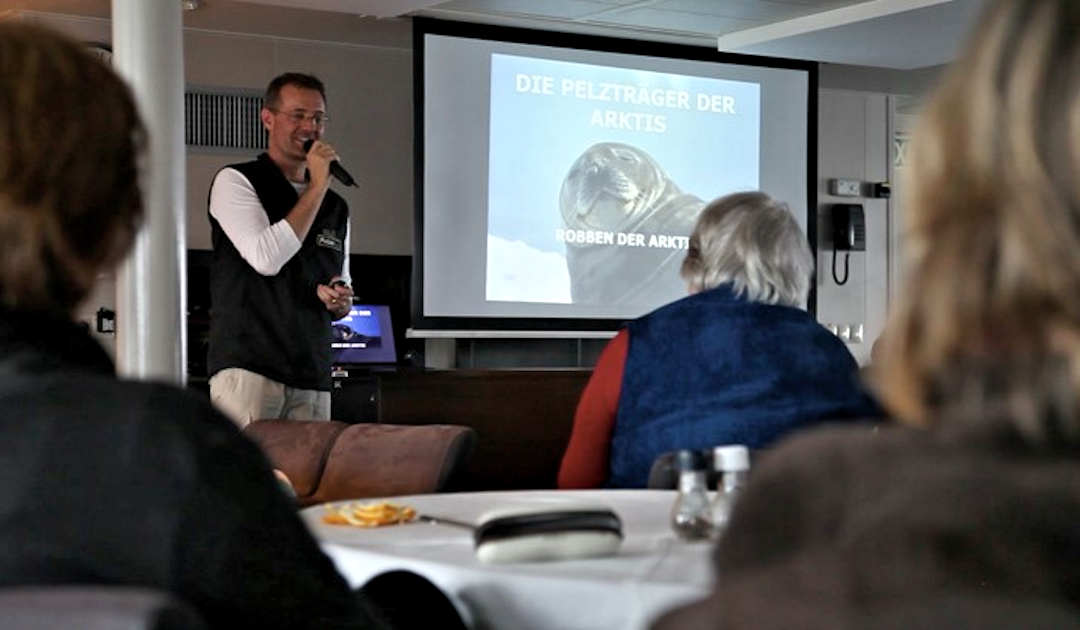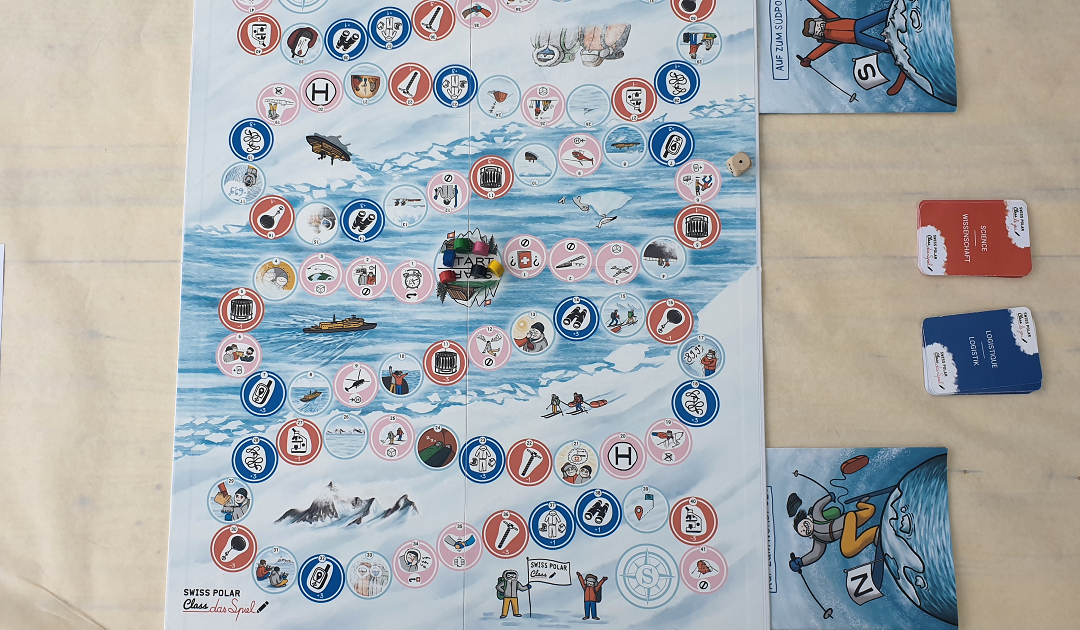
The Arctic and Antarctic have always fascinated and engaged people. Whenever there were expeditions, reports, lectures, later slide shows and films followed, which brought the experiences closer to the public, also in Switzerland. In addition to fame, honor and the possibility of making money, these lectures and presentations were often also about imparting knowledge. Now, a program put together by the Swiss Polar Institute wants to continue this tradition and aims especially at an essential place of knowledge transfer, the schools. The name of the program: Swiss Polar Class.
What does it take to go on expeditions to the North Pole and the South Pole? What happens to an ice drill? What boundaries define the Arctic? What is a polar night? How do humans influence the Arctic and the Antarctic? The Swiss Polar Class wants to ask these and many more questions to children and adults and provide not only the answers but also the explanations. Because questions always arise on the subject of “polar regions”. Hardly any other region in the world occupies people, young or old, as much as the Arctic and Antarctic. And hardly any other region is as little known in society as this one. This is where the Swiss Polar Institute’s program managed by Paul Ducommun and Anita Feierabend wants to start and bring the diversity of the polar regions and research closer to children in an exciting, partly playful but also well-founded way.
The project was developed by Paul Ducommun. “The network of the Swiss Polar Institute provides the necessary support in terms of content so that we can always keep the information up to date,” explains Paul Ducommun. After all, that is one of the essential aspects of the program: to transmit the most up-to-date information on a wide range of polar topics in an understandable way. “We want to reach as many people as possible, especially children and teachers,” says Anita Feierabend. “That’s why the sometimes very complex and interconnected aspects of polar research have to be shown in a way that is accessible to the general public.” So, Swiss Polar Class works especially with visual and interactive tools, such as videos that are available to everyone on Youtube. Emphasis is placed on an aesthetic yet seemingly simple style, in this case a kind of comic style developed by artist Tyone. “His style appeals to everyone, from young to old. It’s simple but aesthetic and, above all, versatile,” says Paul.


The program, which is free of charge and in open access, is aimed primarily, but not exclusively, at children between the ages of 8 and 12 and at teachers. After registration, teachers have access to a wide range of materials on various topics such as polar animals, climate and geography. There are pictures, videos, theory sheets, suggestions for simple experiments, on the website of Swiss Polar Class, everything in two languages (German and French) and in accordance with the “Lehrplan 21” and “PER21” of the Swiss Confederation. This is because the Swiss Polar Class has to be adapted to the Swiss teaching system, which is no easy undertaking. Paul and Anita have to take into account the relevant authorities and institutions in each canton in their planning. The topics are also constantly being expanded. “We have just added the theme “People in the Polar Regions” to the program,” says Anita Feierabend. “That was quite a bit of work. But we are pleased that this important aspect is now available with us.”


The topics are available as a list on the Swiss Polar Class website and are assigned a level of difficulty. This way, interested people can find out in advance for which level the material is suitable. Besides the possibility to download and use the material themselves, Paul and Anita also offer the opportunity to go to school classes and teach the children about the Arctic and Antarctic together with the teachers. Or they organize an event outside of school, such as at the Cerny Museum of Circumpolar Art. They also use a game for example, in which the players go on an expedition to the North and South Poles with the main characters Charlotte, a reporter, and Martin, a polar scientist. A highlight, if you ask children what the most exciting part of Swiss Polar Class is. “Incidentally, the game will also be available for downloading and printing at home”, state Paul and Anita. This way, the expedition starts in one’s own home. And after all, going on an expedition to the Arctic or Antarctic is still at the top of many people’s lists. And thanks to Swiss Polar Class, this can now be experienced in an easier way.
Dr. Michael Wenger, PolarJournal
For more information or to subscribe to Swiss Polar Class, use this link





